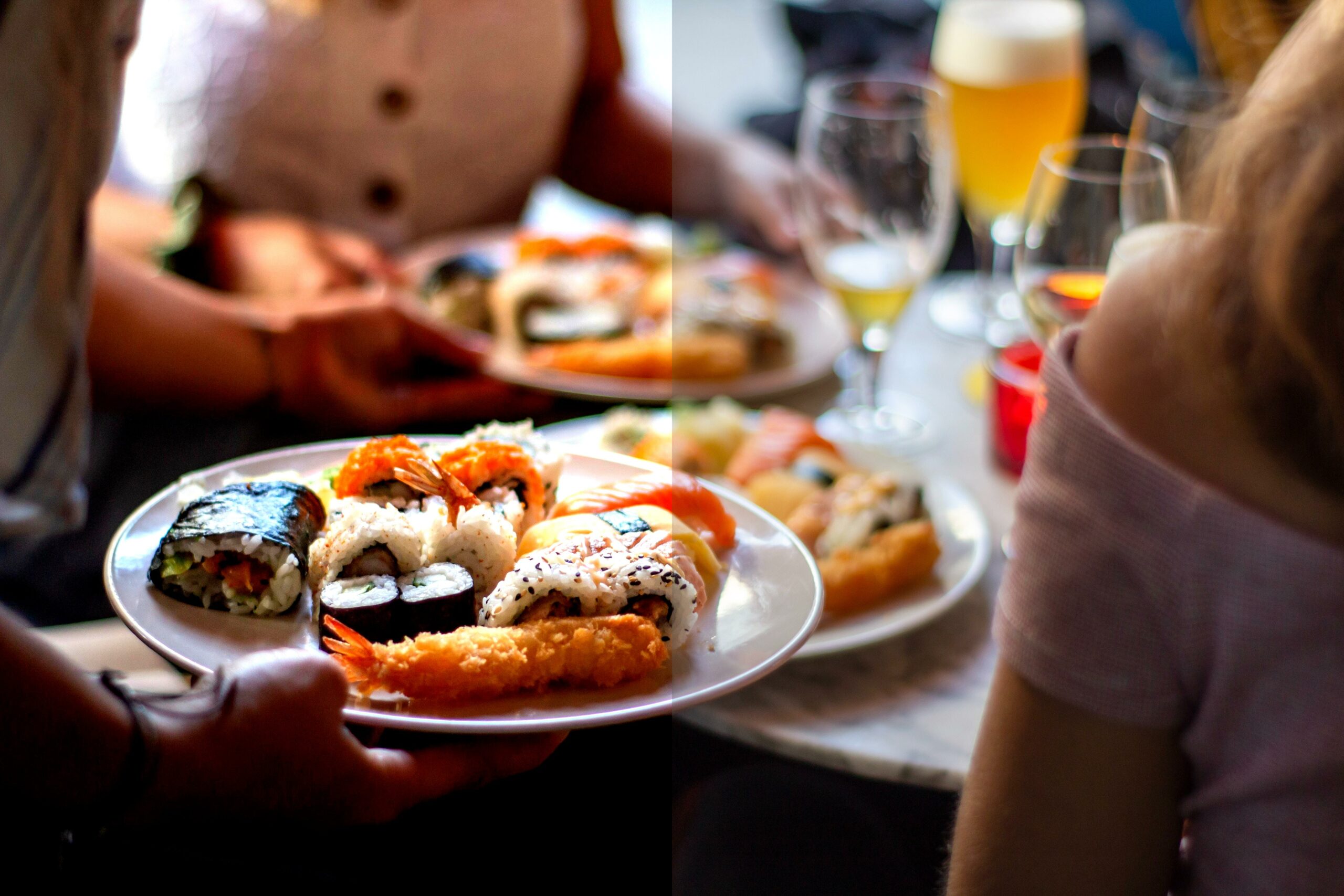Are you ready for a journey through time and taste? Prepare to be captivated by the rich history and intricate evolution of sushi chefs. In this article, we will delve deep into the fascinating world of these culinary artists, unraveling their expertise in sushi rice preparation, knife skills, and artistic presentation. But this is not just a story about sushi; it is a tale of cultural significance and the global impact of these skilled chefs. So fasten your seatbelts, because we are about to embark on a culinary adventure like no other. Welcome to the mesmerizing history of sushi chefs!
History of Sushi Chefs
When we think of sushi, the image of a skilled chef carefully crafting beautiful pieces of nigiri or delicately rolling maki rolls often comes to mind. But have you ever wondered about the rich history behind these masterful sushi chefs? Step into the captivating journey of sushi chefs and uncover how their expertise has evolved over time, shaping not only the culinary world but also the cultural landscape.
The history of sushi is a tapestry intertwined with legends, folklore, and the artistry of talented chefs. The earliest written mention of sushi in English dates back to an 1893 book and a Japanese-English dictionary from 1873. However, the history of sushi chefs goes back even further. It is believed that the inventor of modern sushi is Hanaya Yohei, who revolutionized the sushi world by creating nigiri-zushi around 1824. This innovative technique involved molding vinegared rice by hand and topping it with a slice of fresh seafood. This marked the beginning of a new era for sushi chefs, showcasing their impeccable knife skills and artistic presentation.
Over the years, sushi has constantly evolved, adapting to changing tastes and culinary trends. In Japan, traditional sushi comprised mainly of fish like mackerel, eel, and tuna. Interestingly, it was not until the late 1980s that salmon sushi gained popularity in Japan through a successful marketing partnership. This partnership introduced salmon sushi to the Japanese market and forever altered the sushi landscape.
During the Muromachi period, sushi underwent transformations to make it more palatable. The addition of vinegar-seasoned rice provided a delightful tang, enhancing the overall flavor profile. The Great Kanto earthquake in 1923 also played a significant role in spreading sushi chefs from the city and popularizing sushi throughout Japan. As sushi gained international acclaim, it also faced misconceptions. Many mistakenly use the terms sushi and sashimi interchangeably. While both are delicious, they have distinct differences. Sushi refers to the vinegared rice, while sashimi is thinly sliced raw fish or seafood served without rice. Understanding these nuances is essential to appreciate the artistry of sushi chefs.
Sushi, with its delicate combination of vinegared rice and a plethora of toppings and fillings, has become one of the most well-known Japanese foods worldwide. Its history is a testament to the dedication and expertise of sushi chefs who have elevated sushi from a simple dish to an exquisite culinary art form.
“The history of sushi chefs is a tale of innovation, creativity, and cultural impact. From inventing nigiri-zushi to spreading their skills across Japan and beyond, these talented chefs have left an indelible mark on the sushi landscape.”
As we delve deeper into the history of sushi chefs, it becomes evident that their expertise goes beyond simply making sushi. Sushi chefs are masters of rice preparation, emphasizing the crucial role of perfectly cooked and seasoned rice as the foundation of any sushi creation. The rice used in sushi must be meticulously cooked, with just the right amount of vinegar added for a subtle tanginess.
Furthermore, sushi chefs are revered for their impeccable knife skills. They spend years honing their technique, mastering the art of slicing fish with precision and finesse. Each cut must be executed flawlessly to enhance the texture and taste of the sushi. It is through their knife skills that sushi chefs can elevate a simple piece of fish into a delectable work of art.
“The artistry of sushi chefs lies not just in the presentation of their creations but also in the precision and mastery of their rice preparation and knife skills.”
The cultural importance of sushi chefs cannot be overlooked. They are the custodians of a culinary tradition that has been passed down through generations. Their dedication and expertise have played a significant role in popularizing Japanese cuisine around the world. Sushi chefs have become ambassadors of Japanese culture, showcasing the country’s rich gastronomic heritage to a global audience.
In conclusion, the history of sushi chefs is a fascinating journey that spans centuries. From the invention of nigiri-zushi to the global popularity of sushi today, these masters of their craft have left an indelible mark on the culinary world. Their expertise in sushi rice preparation, knife skills, and artistic presentation has not only contributed to the evolution of sushi but also to the cultural landscape. As we savor each meticulously crafted piece of sushi, let us appreciate the intricate evolution of sushi chefs and their lasting impact on our palates and cultural understanding.
“The evolution of sushi chefs is a testament to their passion, dedication, and the enduring legacy of their craft. Their artistry has captivated taste buds and bridged cultures, making sushi a beloved culinary treasure.”
Sushi chefs are masters of their craft, bringing together skill, precision, and creativity to create culinary works of art. If you’ve ever wondered about the fascinating world of sushi chefs, we’ve got you covered. Explore these facts about sushi chefs to uncover the secrets behind their amazing creations. From their rigorous training and apprenticeships to their impeccable knife skills, this immersive guide will give you a deeper appreciation for the artistry and dedication behind each sushi roll. Click here to dive into the captivating world of sushi chefs: facts about sushi chefs.
In the fast-paced world of sushi, these chefs are the true stars, ensuring that every bite is a culinary delight. Whether you’re a sushi aficionado or simply curious about the inner workings of this ancient tradition, this exploration of sushi chefs’ secrets will leave you hungry for more. So go ahead, click the link and discover the fascinating facts about sushi chefs: facts about sushi chefs.
Sushi chefs have a unique combination of talent, experience, and passion that sets them apart from other culinary professionals. Behind the scenes, they dedicate years to perfecting their craft, learning the delicate art of slicing fish, shaping rice, and creating visually stunning presentations. Dive into the world of sushi chefs today and uncover the intriguing facts that make them the unsung heroes of Japanese cuisine. Are you ready to embark on a journey of culinary discovery? Click here to explore the captivating facts about sushi chefs: facts about sushi chefs.
FAQ
Q: When was sushi first mentioned in English writing?
A: The earliest written mention of sushi in English was in an 1893 book and a Japanese-English dictionary from 1873.
Q: Who is credited with inventing modern sushi?
A: Hanaya Yohei is believed to be the inventor of modern sushi, specifically nigiri-zushi, around 1824.
Q: When did salmon sushi become popular in Japan?
A: Salmon sushi did not become popular in Japan until a successful marketing partnership in the late 1980s.
Q: How did the Muromachi period impact the development of sushi?
A: During the Muromachi period, steps were taken to make sushi more palatable and appealing to a wider audience.
Q: How did the Great Kanto earthquake affect the spread of sushi chefs?
A: The Great Kanto earthquake in 1923 helped spread sushi chefs from the city and popularize sushi as they relocated to other areas.
- China II Review: Delicious Food & Speedy Service - April 17, 2025
- Understand Virginia’s Flag: History & Debate - April 17, 2025
- Explore Long Island’s Map: Unique Regions & Insights - April 17, 2025
















